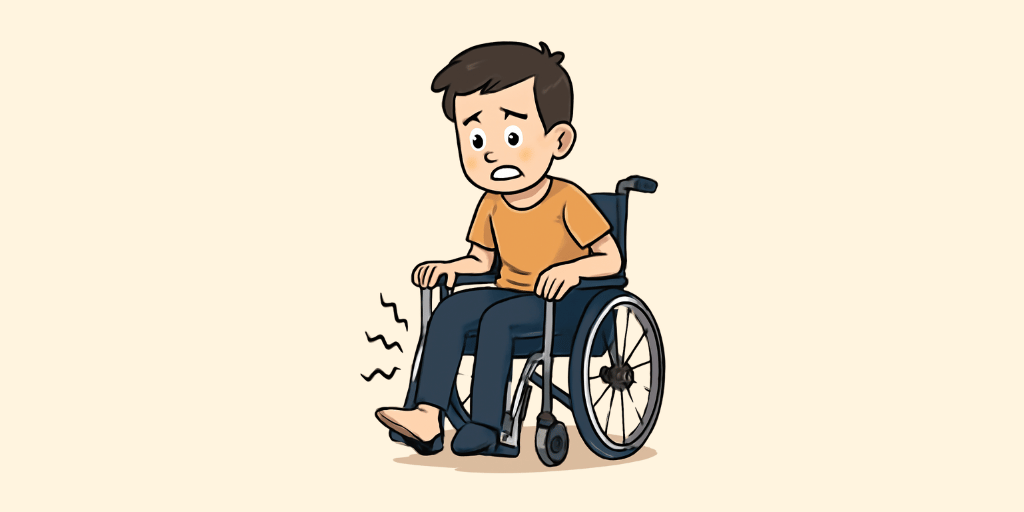Ayurvedic Name: Khanjpangu
Description:
Khanjapangu is a condition that resembles locomotor disability or paralysis of the lower limbs due to aggravated Vata affecting the nerves and muscles. It results in weakness, difficulty in walking, and in some cases, complete immobility of the legs. The root causes include spinal cord disorders, nervous system depletion, trauma, or chronic Vata vitiation. Ayurvedic treatment focuses on nourishing and strengthening the nervous system through therapies like Basti (medicated enema), Abhyanga (oil massage), Swedana (sudation therapy), and oral administration of Rasayanas like Ashwagandha, Bala, and Kapikacchu. Panchakarma therapies, along with lifestyle changes, help restore movement and coordination.
Signs & Symptoms:
- Pada Vata (Lower Limb Paralysis): Complete or partial loss of movement and sensation in the legs.
- Vata Prakopa (Nervous System Imbalance): Weakness or inability to control leg movements.Shwasa (Breathlessness): Difficulty breathing or speaking due to overall weakness and nerve dysfunction.
- Rukshata (Dryness): Dry skin and numbness in the affected limbs.
- Dourbalya (Weakness): Generalized weakness and atrophy in the affected limbs.
- Gaurava (Heaviness): A feeling of heaviness in the lower limbs, particularly in the absence of movement.
Diagnosis:
Lower Limb Motor Strength and Nerve Conduction Study
Risk Factors:
- Dietary Factors
Low Nutrient Intake: Lack of essential nutrients such as vitamin B12, magnesium, and folate, which are vital for nerve health and function.
Excessive Alcohol and Smoking: Excessive consumption of alcohol and smoking can impair nerve health and increase the risk of paralysis due to poor circulation and weakened nerve signals. - Lifestyle Factors
Sedentary Lifestyle: Lack of physical activity or prolonged sitting can lead to poor circulation and muscle weakness, increasing the risk of nerve damage or paralysis.
Trauma or Injury: Physical injury, such as spinal cord injury, can lead to nerve damage resulting in paralysis. - Medical Conditions
Spinal Cord Injury: Damage to the spinal cord due to accidents, trauma, or medical conditions like spinal stenosis can result in lower limb paralysis.
Neurological Disorders: Conditions like multiple sclerosis or motor neuron disease that affect the nervous system can cause paralysis.
Complications:
- Loss of Sensation (Sannipata Gyanah): Paralysis can cause a complete loss of sensation in the lower limbs, making it difficult to sense temperature or touch.
- Muscle Atrophy (Mamsa Kshaya): Prolonged paralysis results in muscle wasting in the legs, which may lead to deformities and weakness.
- Increased Risk of Pressure Ulcers (Vranashoshan): Reduced mobility increases the risk of developing pressure sores, particularly in the immobile areas of the body.
- Respiratory Complications (Shwasa Vikara): In severe cases, lower limb paralysis may affect respiratory function if the diaphragm or chest muscles are involved.
- Bladder and Bowel Dysfunction (Mutra-Pecha Vikruti): Paralysis can affect the control of the bladder and bowel, leading to incontinence.
Epidemeology:
More common in older adults, particularly those aged 50-70, with stroke, spinal cord injuries, and neurological diseases being the leading causes.
Affects approximately 1-2% of the population, with a higher incidence in individuals with cardiovascular diseases, diabetes, and spinal conditions.
Men are slightly more affected than women, especially those with work-related injuries or trauma.

